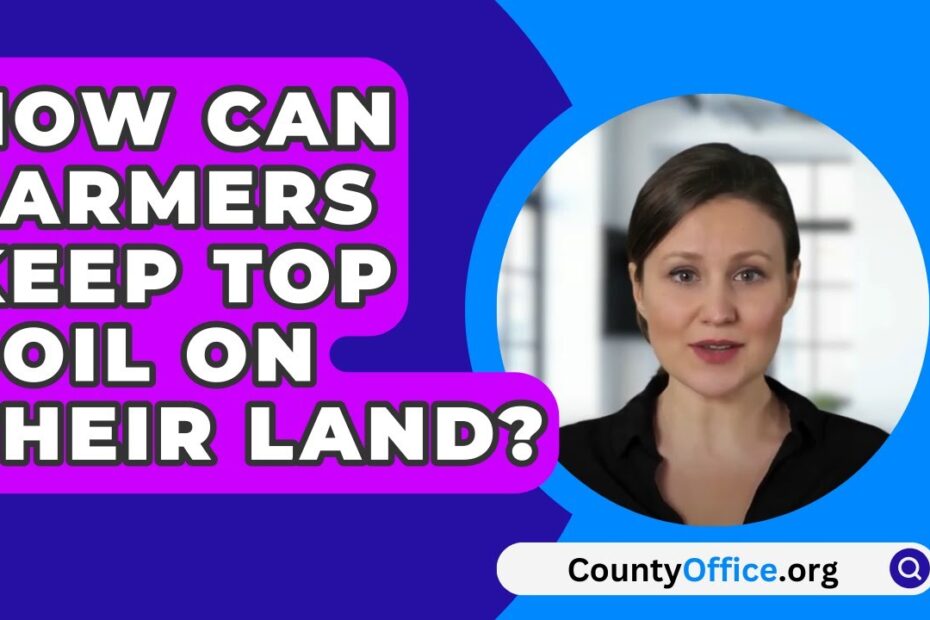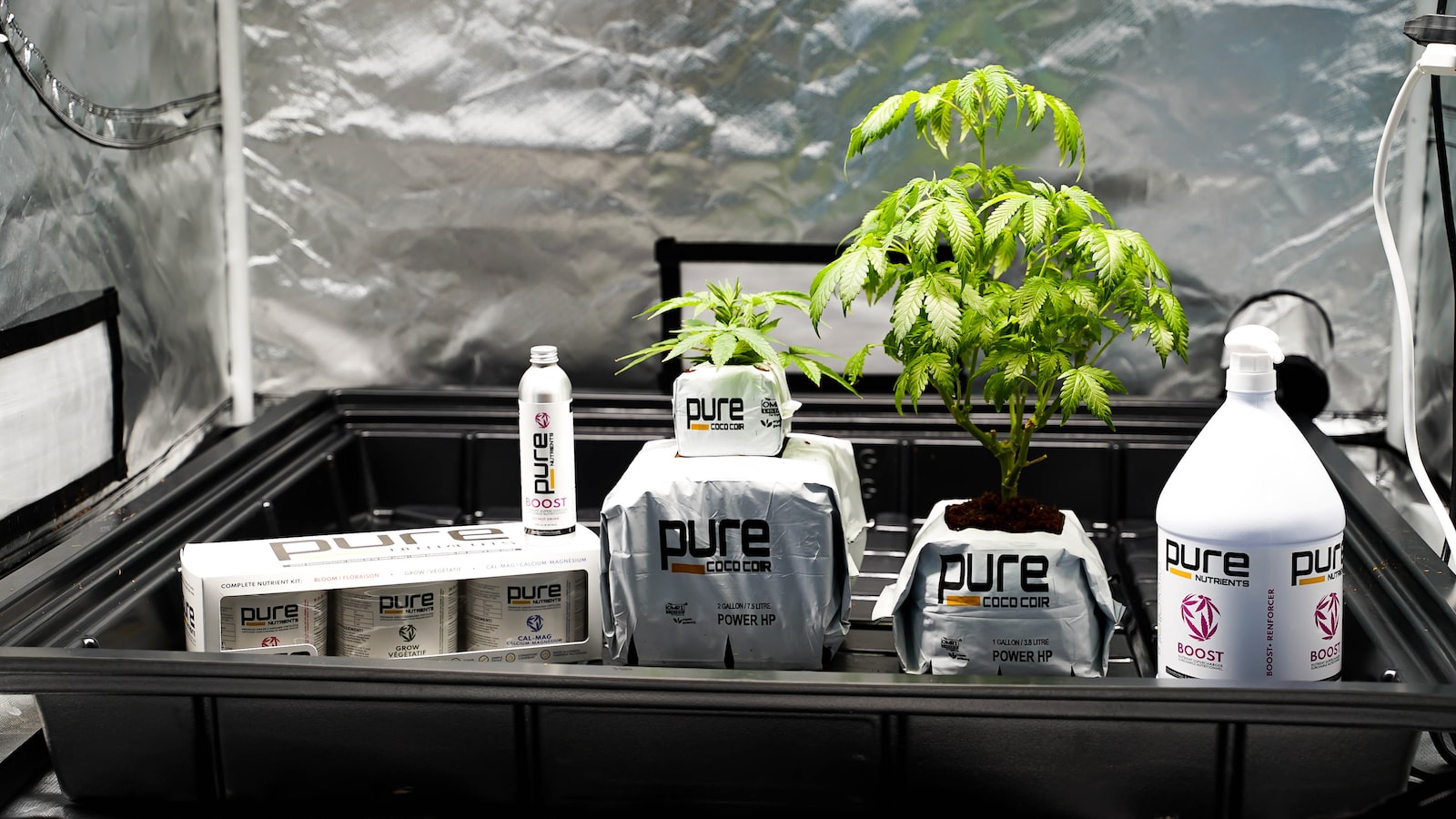
Unveiling the Secrets of Sustaining Soil: A Farmer’s Quest to Preserve Nature’s Blanket
In the tapestry of agriculture, topsoil emerges as the silent hero, embracing a profound yet underestimated role. It is the delicate layer that harbors the mysteries of life beneath our very feet, nurturing crops, and fortifying ecosystems. However, as modern challenges loom, farmers find themselves standing at a pivotal crossroads – a crossroads that demands innovative solutions to keep this essential blanket of fertility intact. Today, we embark on a journey to explore how farmers can safeguard and nurture their precious topsoil, maintaining a symbiotic harmony with nature’s artistry. Join us on this emprise of preservation, uncovering the untold secrets that lie beneath the fertile embrace of the Earth.

Cultivating Sustainable Practices to Preserve Vital Topsoil
Farmers play a critical role in preserving the vital topsoil on their land, ensuring its longevity and sustaining agricultural practices for generations to come. By adopting sustainable practices, they can cultivate a healthier environment and maximize the productivity of their farms. Here are some essential features and tips that farmers can employ to keep topsoil on their land:
1. Crop Rotation:
Implementing a well-planned crop rotation strategy helps farmers maintain soil structure, reduce erosion, and mitigate nutrient depletion. By alternating between different crop types, such as legumes and grains, valuable nutrients are replenished, pests and diseases are controlled naturally, and the overall health of the soil is improved.
2. Cover Crops:
Utilizing cover crops, such as rye, clover, or buckwheat, acts as a protective blanket for the soil, preventing erosion, conserving moisture, and adding organic matter. These plants help suppress weeds, enhance soil fertility, and promote beneficial microbial activity, ensuring the soil remains rich and intact throughout the year.
| Feature/Tips |
Benefits |
| Crop Rotation |
Maintains soil structure, reduces erosion, and controls pests/diseases. |
| Cover Crops |
Prevents erosion, conserves moisture, suppresses weeds, and enhances soil fertility. |
| Conservation Tillage |
Preserves soil structure, reduces erosion, improves water infiltration, and retains organic matter. |
3. Conservation Tillage:
Moving away from conventional plowing, conservation tillage techniques minimize soil disturbance, protecting the integrity of the topsoil. This approach reduces erosion, improves water infiltration, preserves soil structure, and retains essential organic matter, providing a more sustainable and productive environment for crops to thrive.
Loading... Seconds Left for
Miniature Orchid Terrarium Gallery!

Cultivating sustainable practices and incorporating these features/tips into their farming routines, farmers can ensure the preservation of vital topsoil on their land. By doing so, they contribute to a healthier ecosystem, increased food production, and the long-term sustainability of agriculture.

Building a Foundation: Understanding the Importance of Topsoil Retention
Topsoil, the uppermost layer of soil, is the foundation for successful farming. Its retention is vital for ensuring healthy crops, preventing erosion, and maintaining sustainable agricultural practices. With the increasing threat of soil erosion caused by factors like wind and water, it is crucial for farmers to adopt effective strategies to keep topsoil on their land. Here are some innovative and practical ways that farmers can employ to protect and retain their valuable topsoil:
<th>Features
| Tips |
| 1. Contour Plowing |
Planting crops perpendicular to the slope, creating natural barriers that slow down water flow. |
| 2. Cover Crops |
Growing crops like clover or rye during off-seasons to protect the soil from erosion and nutrient loss. |
| 3. Terracing |
Constructing level platforms on steep slopes, reducing water runoff and preventing soil erosion. |
These strategies help to minimize the negative impact of erosion on farmers’ valuable topsoil. Additionally, adopting conservation tillage practices like minimum or no-till farming can significantly contribute to topsoil retention. By reducing soil disturbance, farmers can preserve soil structure, protect beneficial organisms, and prevent excessive erosion. It’s important for farmers to understand that by taking proactive measures to retain topsoil, they are not only ensuring the sustainability of their own farms but also contributing to the preservation of our environment for future generations.

The Power of Cover Crops: Shielding and Nurturing Healthy Soil
As farmers strive to maintain the precious topsoil on their land, they can harness the incredible power of cover crops. These crops play a vital role in shielding and nurturing the health of the soil, ensuring its sustainability for future generations. Cover crops, such as legumes, grasses, and grains, are planted primarily to protect the soil from erosion, minimize weed growth, and enhance its fertility. By keeping the soil covered throughout the year, farmers can create a barrier against wind and water erosion, preventing the loss of valuable topsoil and preserving its essential nutrients.
Moreov
er, cover crops significantly contribute to soil health by enriching its organic matter content. As these crops grow, their roots penetrate the soil and increase its overall stability, preventing compaction and enhancing its ability to retain water. The root systems also promote microbial activity, creating a thriving ecosystem underground. This improves soil structure, increases its water-holding capacity, and boosts nutrient availability for future crops. Additionally, certain cover crops have the extraordinary ability to fix atmospheric nitrogen, naturally enriching the soil with this essential nutrient while reducing the need for synthetic fertilizers.
| Features/Tips |
Benefits |
| Diverse cover crop mix |
- Enhanced soil fertility
- Reduced pest and disease pressure
- Improved weed suppression
|
| Proper timing of cover crop planting |
- Maximized soil protection and nutrient capture
- Minimized competition with cash crops
- Optimized pollinator habitat
|
| Careful cover crop termination |
- Prevents excessive competition for moisture and nutrients
- Allows for easier incorporation into the soil
- Reduces weed seed production
|

Implementing Erosion Control Techniques: Shielding Topsoil from Natural Forces
A crucial concern for farmers everywhere is the preservation of topsoil, as it acts as a precious resource for cultivating healthy crops and sustaining agricultural productivity. The forces of nature, such as rainfall, wind, and slope, can easily strip away this layer of fertile soil, leading to decreased crop yields and environmental degradation. However, there are several innovative techniques that farmers can employ to effectively keep topsoil on their land and prevent erosion.
st-section">
1. Terracing:
- Constructing terraces on slopes to reduce the speed of water runoff.
- Creating level platforms to retain water and minimize soil erosion.
- Planting vegetation on terraces to enhance soil stability and absorption of rainfall.
|
d>
2. Contour Ploughing:
- Ploughing along the contours of the land to create natural barriers against water flow.
- Preventing water from gaining enough force to wash away topsoil.
- Maintaining soil moisture and promoting infiltration.
3. Cover Crops:
- Planting cover crops during fallow periods to shield topsoil from erosive forces.
- Improving soil structure and organic matter content.
- Reducing surface runoff and increasing water infiltration.
|
4. Mulching:
- Applying organic or inorganic materials to cover the soil surface.
- Preventing raindrop impact and reducing soil temperature fluctuations.
- Enhancing moisture retention and suppressing weed growth.
|
5. Windbreaks:
- Planting trees or erecting fences to create barriers against wind erosion.
- Reducing wind velocity and deflecting it over the land.
- Protecting crops and stabilizing topsoil.
|
6. Conservation Tillage:
- Minimizing soil disturbance during planting by leaving crop residues on the surface.
- Enhancing water infiltration, organic matter content, and soil structure.
- Reducing erosion and improving long-term soil health.
|
By implementing these erosion control techniques, farmers can mitigate the detrimental effects of natural forces on their valuable topsoil. Each method offers unique benefits, and it is essential for farmers to evaluate their specific land conditions and choose the most suitable approach. With careful planning and the adoption of these strategies, topsoil erosion can be effectively minimized, ensuring sustainable agricultural practices and a prosperous future for farmers and their communities.
Frequently Asked Questions
Q: What’s the secret ingredient to keeping topsoil from going airborne?
A: Clean Air Act regulations and sustainable farming practices work hand in hand to minimize soil erosion and secure topsoil on farmers’ land. By controlling dust levels, reducing pollutants, and fostering sustainable land management, the delicate dance between regulations and farmers ensures topsoil stays grounded.
Q: How can
farmers keep their precious topsoil from being washed away during heavy rains?
A: Nature’s ingenious solution lies in contour farming and strip cropping! By creating rows that follow the natural shape of the land, farmers can effectively channel rainwater, preventing it from forming destructive runoff and carrying away their vital topsoil. By strategically employing crops with high root density, such as grasses or legumes in alternating strips, farmers can anchor the topsoil even further, ensuring it remains where it belongs.
Q: Are there any magical tips for farmers to maintain thriving topsoil?
A: The secret lies beneath our feet. Conservation tillage techniques, like the renowned “no-till” farming, allow the land to sink into a tranquil slumber, disturbed less by invasive plowing and more by the gentle caress of crops growing right through the remnants of their ancestors. This method minimizes soil disturbance, retains the moisture content, and preserves the organic matter, contributing to the preservation and enrichment of topsoil. Remember, the true magic lies in treating the land like a precious heirloom and nurturing it with the utmost care. As the sun dips below the horizon, painting the sky in vibrant hues of orange and pink, the hardworking farmers find solace in the knowledge that their land is flourishing. The success of their harvests is not merely a stroke of luck, but a result of their unwavering commitment to preserving the precious topsoil that cradles their every seed. Farmers across the globe stand as guardians of this invaluable resource, and their devotion to its protection is crucial for a sustainable future.
In a world plagued by environmental challenges, farmers have become the unsung heroes, employing ingenuity and sustainable practices to ensure the longevity of their fertile soil. The quest for retaining topsoil has become a delicate dance, with each farmer fine-tuning their steps to the rhythm of nature.
A crucial s
tep in this intricate choreography lies in implementing measures to prevent erosion. Shielding the land against the relentless force of wind, water, and time requires a multifaceted approach. Strategic contour plowing, the art of shaping the land to mimic the gentle curves of nature, anchors the soil in place, preventing its loss to runoff during heavy rains.
But the guardians of topsoil do not stop at contour plowing alone. They go the extra mile, embracing techniques like terracing and strip cropping, which create natural barriers against erosion. By interweaving rows of different crops, wise farmers effectively interrupt the path of water flow, reducing the likelihood of soil displacement while nurturing biodiversity.
In the battle against erosion, cover crops are a formidable ally that farmers have come to rely on. These humble, yet powerful plants blanket the fields, shielding the bare soil from the clutches of wind and water. Their roots, entwined in a symbiotic embrace, hold the land intact and nourish it with vital nutrients, even during the dormant winter months.
As the seas
ons unfold, farmers have understood the importance of cycling their crops, a practice that transcends mere economic gain. Embracing crop rotation prevents the depletion of nutrients and safeguards against pest and weed infestation, all while reducing the likelihood of erosion. It is an enchanting dance of ecological harmony, allowing the land to rejuvenate and thrive.
In their tireless pursuit of preserving the sanctity of their land, farmers have recognized the significance of organic matter. By embracing nature’s ultimate recycling program—composting—they breathe life back into their soil. With every onion peel, coffee ground, and fallen leaf carefully arranged in organic symphony, the soil regains its vitality, becoming a reservoir of nutrients fit for bountiful harvests.
The legacy farmers leave behind is not solely measured in pounds of produce or profit margins. It is a legacy of responsibility and stewardship, an unwritten contract between land and farmer, woven together by the love for the soil. As we witness the modern-day crusade to safeguard topsoil, we are reminded of the power of sustainable farming practices. For it is through the unwavering commitment of these guardians that the land breathes a sigh of relief, knowing it is cherished and its nourishing potential protected for generations to come.
Hello! I'm Jessica Owen, an avid gardener and proud contributor to Up-Gardening.com. Gardening is my passion, and I'm delighted to share my green-thumb experiences with you. From planting tips to nurturing blooms, I'm here to help you cultivate your own slice of paradise. Let's grow together in the garden!
Latest posts by Jessica Owen
(see all)v>
<
!-- CONTENT END 1 -->





